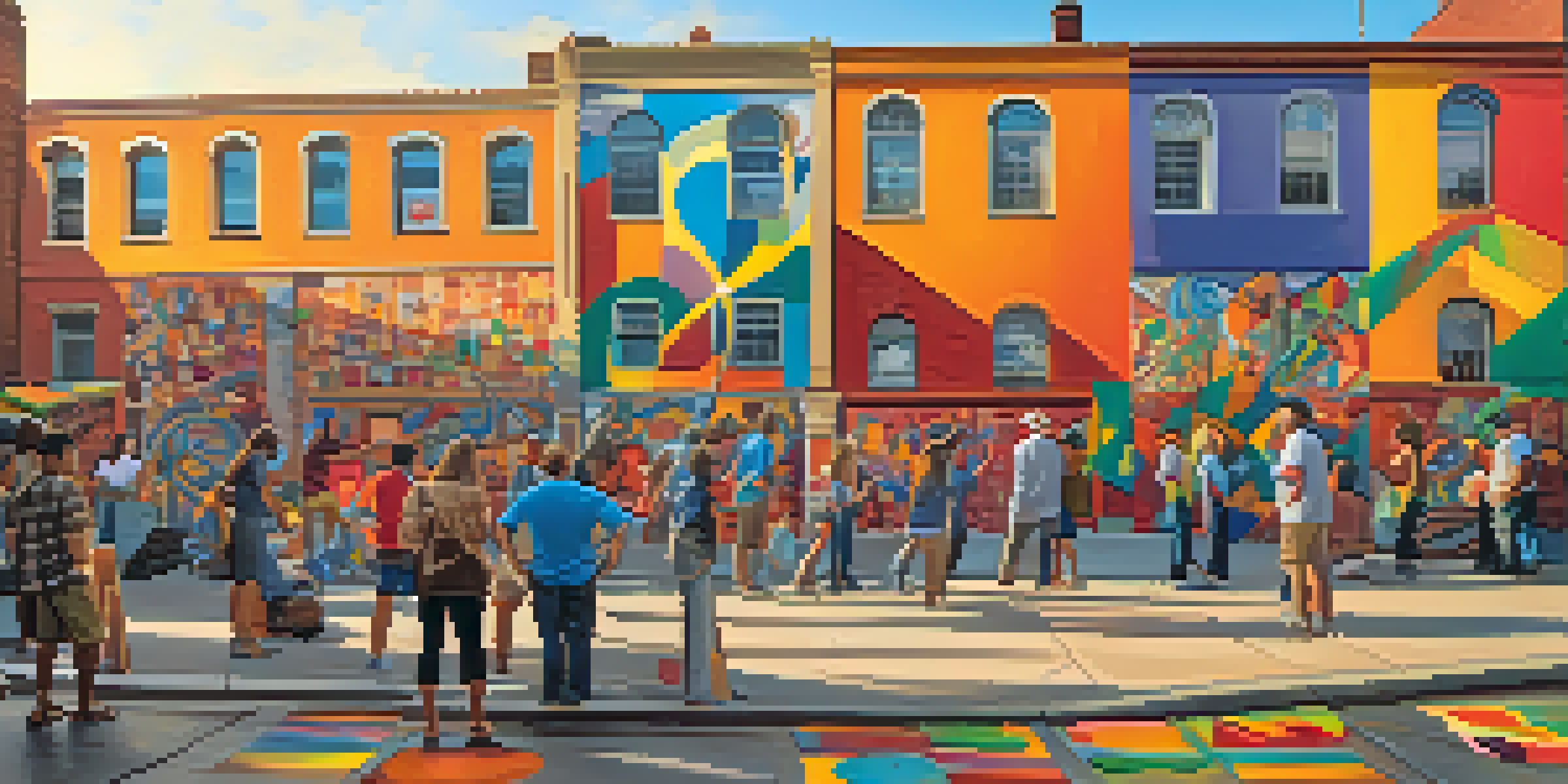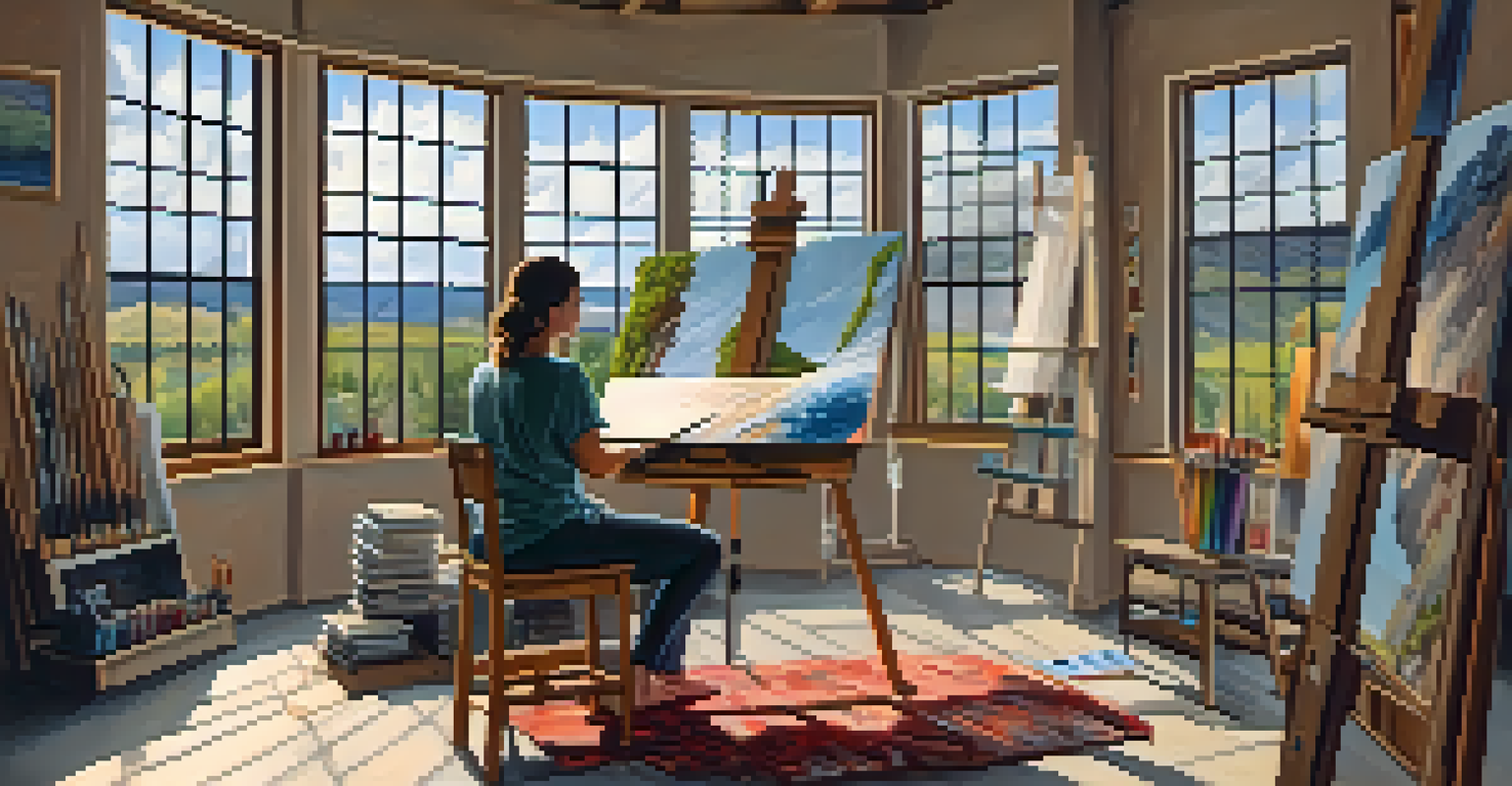Censorship and Artistic Freedom: Politics of Expression

Understanding Censorship: A Brief Overview
Censorship refers to the suppression of speech, public communication, or other information that may be considered objectionable or harmful. It often occurs in various forms, from government intervention to self-censorship by artists wary of backlash. The reasons behind censorship can range from protecting national security to maintaining moral standards, but it often raises questions about the limits of freedom of expression.
Censorship is the child of fear and the father of ignorance.
For instance, in many countries, political dissent is heavily censored, limiting artists' ability to critique the government through their work. This not only stifles creativity but also creates an environment where art can no longer challenge societal norms or provoke thought. As a result, censorship can lead to a homogenization of ideas, where only safe, mainstream narratives are allowed to flourish.
Understanding censorship is crucial in the context of artistic freedom, as it sets the stage for the ongoing debate about how much control authorities should have over creative expression. This complex relationship affects not just artists, but society as a whole, as it shapes cultural narratives and influences public discourse.
The Role of Artistic Freedom in Society
Artistic freedom is essential for fostering innovation and creativity in any society. It allows artists to explore new ideas, challenge existing norms, and address complex societal issues through their work. When artists feel free to express themselves without fear of censorship, they can contribute to a vibrant cultural landscape that encourages dialogue and reflection.

Take, for example, the power of protest art, which has historically played a significant role in social movements. Artists like Banksy use their work to comment on political issues, pushing audiences to reconsider their perspectives. Such expressions not only provide a voice to the marginalized but also spark conversations that can lead to meaningful change.
Censorship Limits Artistic Expression
Censorship stifles creativity by suppressing diverse voices and restricting artists from critiquing societal norms.
However, artistic freedom is not universally accepted. In many regions, political and social pressures can stifle creativity, forcing artists to self-censor or alter their work to fit within restrictive boundaries. This ongoing struggle highlights the need for advocacy and support for artists seeking to push against these limitations.
Historical Examples of Censorship in Art
Throughout history, numerous artistic movements have faced censorship, revealing the tension between creative expression and societal norms. The Dada movement, for instance, emerged as a form of protest against the horrors of World War I, seeking to challenge traditional artistic conventions. However, many of its works were met with hostility and censorship, as they were deemed too radical or offensive.
Art should comfort the disturbed and disturb the comfortable.
Similarly, in the 1980s, the NEA Four, a group of artists whose works were funded by the National Endowment for the Arts, faced significant backlash for their provocative pieces. Their experiences highlighted the precarious position of artists reliant on public funding, as their work was scrutinized and often censored due to its controversial nature.
These historical examples illustrate that censorship is not a new phenomenon; rather, it has been a persistent challenge for artists across different eras. By examining these instances, we can better understand the ongoing battle for artistic freedom and the implications of censorship on creativity.
Censorship vs. Self-Censorship: Understanding the Difference
While censorship typically involves external forces imposing restrictions, self-censorship occurs when artists limit their own expression due to fear of repercussions. This can stem from various factors, including societal norms, personal beliefs, or the potential backlash from audiences and critics. Self-censorship can be just as damaging as overt censorship, as it can prevent artists from fully exploring their ideas.
For example, a filmmaker may choose to omit controversial themes from their work to ensure wider distribution, sacrificing their artistic vision for commercial viability. This internal struggle often reflects the broader societal pressures that dictate what is considered acceptable, leading to a diluted artistic landscape.
Digital Media: A Double-Edged Sword
While digital media democratizes art and connects artists with audiences, it also introduces challenges of censorship through platform regulations.
Understanding this distinction is vital, as it highlights the importance of creating environments where artists feel safe to express themselves freely. Encouraging open dialogue around sensitive topics can empower artists to push boundaries and explore the full range of human experience in their work.
The Impact of Digital Media on Artistic Freedom
Digital media has revolutionized the way art is created, shared, and consumed, offering new avenues for artistic expression. Social media platforms, in particular, provide artists with a space to showcase their work and connect with audiences directly, bypassing traditional gatekeepers. This democratization of art can lead to more diverse voices being heard and celebrated.
However, the rise of digital media also poses challenges in terms of censorship. Online platforms often enforce their own content policies, which can lead to the removal of works deemed inappropriate or offensive. Artists may find themselves navigating a complex web of guidelines that can stifle their creativity, prompting them to self-censor to avoid penalties.
The balance between utilizing digital platforms for expression and facing the risk of censorship is a critical conversation in today’s artistic landscape. As artists adapt to these new realities, the ongoing dialogue about the implications of digital media on artistic freedom remains essential.
Global Perspectives on Censorship and Artistic Freedom
Censorship and artistic freedom vary significantly across different cultures and political systems. In some countries, strict censorship laws govern the arts, leading to a climate where artists must tread carefully to avoid repercussions. For instance, in North Korea, art is tightly controlled, with only government-approved themes being permissible, effectively stifling any form of dissent.
Conversely, countries with stronger protections for freedom of expression, such as those in Western democracies, often experience vibrant artistic communities that challenge societal norms. However, even in these settings, artists can face backlash or censorship from various groups who may disagree with their messages.
Global Struggles for Artistic Freedom
Artistic freedom varies worldwide, with some cultures facing stringent censorship while others enjoy more vibrant, expressive communities.
Understanding these global perspectives is crucial to recognizing the universal struggle for artistic freedom. By learning from different cultural contexts, artists and advocates can find common ground and work together to combat censorship, fostering a more inclusive and dynamic artistic landscape worldwide.
Advocacy and Support for Artists Facing Censorship
As censorship continues to challenge artists around the globe, advocacy plays a vital role in supporting their right to express themselves freely. Organizations like PEN America and the International Association of Art provide resources and platforms for artists to voice their concerns and seek assistance when facing censorship. These groups work tirelessly to promote artistic freedom and protect those whose work is unjustly silenced.
Additionally, raising public awareness about censorship can empower communities to stand in solidarity with artists. Engaging in discussions around censorship not only brings attention to specific cases but also fosters a culture that values artistic expression as a fundamental human right.

Ultimately, supporting artists in their fight against censorship is essential for nurturing creativity and innovation in society. By advocating for artistic freedom, we can help ensure that a diverse range of voices continues to enrich our cultural landscape.